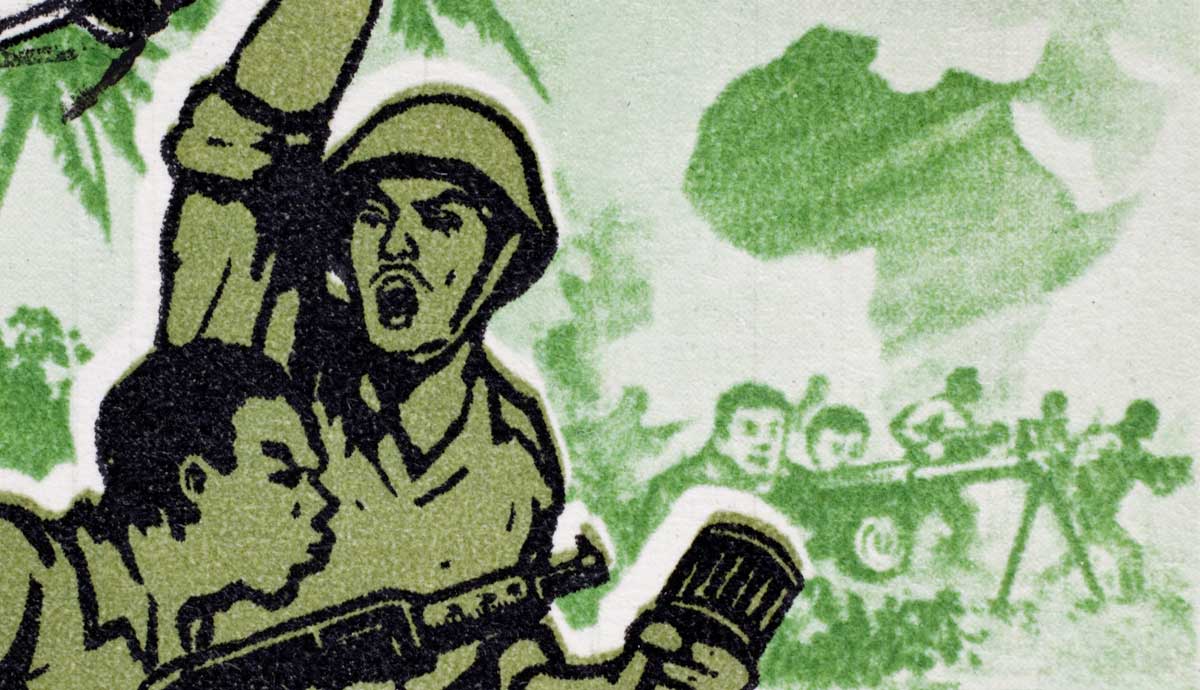
The 1953 Korean War armistice ended the fighting but not the war. For the next 15 years, skirmishing continued in a low-intensity conflict along the DMZ, or Demilitarized Zone. 1968 became a year when North Korean skirmishes became full-blown attacks. The South Korean and American governments responded, increasing the intensity and tensions.
Why Was North Korea Aggressive in 1968?

For nearly two years, the Koreas fought “quietly” along the DMZ. North Korea constantly looked for moments to strike, and 1968 looked very promising. The hated Americans, distracted by the Vietnam War, took less notice of Korea. They view the South Korean government as weak. Also, Communist North Korea’s main goal was to reunify Korea under Kim Il Sung. These attempts aimed to consolidate Kim’s power further.
Who Were the Leaders During the Korean Conflict?

The three leaders were Kim II Sung, President Park Chung Hee, and President Lyndon Johnson. The instigator, Kim II Sung, ruled North Korea since the end of World War II. His firm objective was to reunite the Koreas by force if necessary. The guerilla tactics initiated on his orders would destabilize the South, fostering revolution so his armies could swoop in. South Korean President Park Chung Hee seized power in 1961 and slowly modernized Korea. The American President in 1968 was Lyndon Johnson, who became President after Kennedy’s 1962 assassination.
When Did the North Koreans Attack the Blue House?

North Korea’s first 1968 attack happened on January 21. A commando group snuck into South Korea on January 17. Their mission: attack the Blue House (President’s residence) and kill Park Chung Hee. Woodcutters soon discovered them just over the border, thwarting their plans. The 31 commandos traveled south, disguised as soldiers from the Republic of Korea. Somehow, they evaded the Americans and South Koreans searching and came within yards of the Blue House.
A stubborn, suspicious police captain stopped them. In a pitched gun battle, the Koreans clashed, firing in all directions. But with surprise gone, the North Koreans scattered only to be hunted down over several days. One survived; one surrendered, and the other returned to the North.
How Was the USS Pueblo Bad for Everyone?

On January 23, 1968, only two days after the Blue House Raid, the North Koreans captured the USS Pueblo. The Pueblo, a lightly armed fishing trawler, had been equipped with sophisticated intelligence gear with a mission to record North Korean communications. But the boat sailed into perilous waters.
The North Koreans claimed the Pueblo strayed into their territory; thus, they attacked. The attack killed one sailor and imprisoned 82. Besides a chance to humiliate America, Kim Il Sung’s government soon learned of the spy ship’s mission. Once the U.S. knew of Pueblo’s fate, President Johnson considered blockades, aerial bombardments, or more. He rushed more forces to the area as a precaution. Jonhson backed down, fending off calls for nuclear attacks and letting diplomacy work.
After tense negotiations, the U.S. half-heartedly apologized. The North Koreans released the Pueblo’s crew, knowing their victory from the standoff. The USS Pueblo remains in North Korea and is considered an active U.S. Navy ship. Many Americans thought this raised the risk of a world war.
Where Else Did the North Koreans Attack in Korea?

The North Koreans kept up small attacks throughout 1968. The biggest push happened on November 30, 1968, in Samchok, South Korea. One hundred twenty commandos from Unit 24, a highly trained and fanatical group, landed at eight beaches around Samchok. They hoped to create secret bases in the nearby mountains and politicize the South Korean villagers to revolt. But their intentions went sideways as the villagers grew angry at the forced indoctrination. Clashes happened with the DPRK, or Democratic People’s Republic of Korea, commands who killed several. Numerous villagers escaped, alerting local police and Korean army units.
The ROK, or South Korean Army, quickly closed off the area. The U.S. Army helped with troops and helicopters. To hunt just the invaders, President Park mobilized 70,000 men. The dragnet closed in, so by December 26, the Army eliminated 117 North Koreans. The South Koreans lost 63 killed, plus villagers. Even the Americans suffered four dead. These landings became North Korea’s big efforts due to the cost and finding no enthusiastic Communist-leaning response.
How Did the 1968 Korean Conflict End?
The Korean Conflict of 1968 was never war but ranged from skirmishes to battles. By 1969, Kim Il Sung realized the attacks produced no favorable results. The North Korean economy wasn’t great, and his army was woefully obsolete. While maintaining a belligerent political front, Kim turned inwards to focus on potentially bigger problems.









